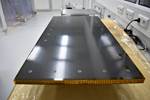Huntsman, AMD collaborate for functional composites development
Electrically enhanced, carbon nanotube-integrated composite materials will be supported by Advanced Material Development’s (AMD) nanomaterials expertise and Huntman’s chemical and material solutions.
Source | Getty Images
Global material solutions provider Huntsman Corp. (The Woodlands, Texas, U.S.) has announced it will collaborate with nanomaterials business (AMD) to develop carbon nanotube (CNT)-integrated functional composite materials in the U.S.
Specifically, the collaboration will involve the development of electrically enhanced materials by integrating AMD’s all-carbon technology into Huntsman’s resin systems to provide high-performance composites for the defense and aerospace industry.
Huntsman’s senior technical leadership will be working with AMD’s teams affiliated with Rice University in Houston, Texas, and the University of Sussex in the U.K., to develop product solutions that are cost-effective and reliable.
“This relationship brings together some of the best learnings in advanced carbon fiber technology,” says John Fraser, commercial director of Miralon for Huntsman Corp. “AMD’s work in next-generation carbon fiber materials, plus the expertise through Rice University’s Carbon Hub, along with Huntsman’s knowledge and capabilities with composites and CNT materials, create an opportunity for collaboration and progress.”
This progress will be aided by the timely sabbatical of Professor Alan Dalton, who is chief scientific advisor at AMD and chair of material physics at Sussex University. Dalton’s sabbatical will be spent at Rice University, allowing close proximity to Huntsman’s operations.
“Being based in Texas allows me to work more closely with both Huntsman and AMD, facilitating faster and more effective progress,” says Dalton. “This proximity is key in accelerating the development of these composites for applications ranging from wind turbines to aerospace structures and enables us to leverage the combined expertise of the teams at Rice and Sussex.”
Related Content
-
Infinite Composites: Type V tanks for space, hydrogen, automotive and more
After a decade of proving its linerless, weight-saving composite tanks with NASA and more than 30 aerospace companies, this CryoSphere pioneer is scaling for growth in commercial space and sustainable transportation on Earth.
-
HydroGraph, NEI Corp. launch graphene dispersions line
Two novel dispersions, comprising HydroGraph’s pristine fractal graphene and NEI’s experience in battery materials, targets coatings, energy storage and composite materials.
-
Goodman Technologies, partners scale up AI-empowered 3D printing of nanocomposites for spacecraft TPS
NASA project addresses the capability gap in TPS production and installation for space exploration and hypersonic systems, delivering an ARMs system, nanopaste and prepreg tapes, manufacturing verification coupons and more.






